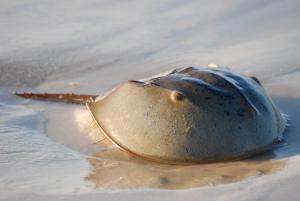 Having just attended the Baker & Stebbins Legacy Symposium on Invasion Genetics in Pacific Grove, California, I have had a rare bit of leisure time between my book-writing commitments and operating in conference mode. It’s summer here in California, so I’ve taken the opportunity to read a bit of The New Yorker in my accommodation. It is indeed a pleasure to have these micro-moments of ‘leisure’ reading. As it turns out though, work subjects are never far from my mind as I do this.
Having just attended the Baker & Stebbins Legacy Symposium on Invasion Genetics in Pacific Grove, California, I have had a rare bit of leisure time between my book-writing commitments and operating in conference mode. It’s summer here in California, so I’ve taken the opportunity to read a bit of The New Yorker in my accommodation. It is indeed a pleasure to have these micro-moments of ‘leisure’ reading. As it turns out though, work subjects are never far from my mind as I do this.
So it interested me greatly when I read another fantastic article in the ‘Yorker about horseshoe crabs, and their precarious state despite having survived half a billion years on this planet. While I was generally interested in the science, biomedical applications, conservation and systematics of the species, what really caught my eye was the proposal to list them as a ‘World Heritage Species’.
A what? Never heard of that classification, you say? Neither had I. Not to worry though – it doesn’t exist yet.
It turns out that people have been proposing just such a system for individual species as we now have for special sites around the world – the United Nations’ World Heritage system. As many of you know, these sites have rather a lot of prestige, political power and international oversight. A point in question is that our current train-wreck government in Australia has recently tried to remove the World Heritage status of Tasmanian forests, only to fail after the Committee took all of 10 minutes to quash the proposal. As far as I know, even the Environmental Abbott-oir hasn’t yet tried to appeal that decision. In another Australian example of how the system can influence national policy, the World Heritage Committee has also threatened to remove the special status from the Great Barrier Reef if Australia doesn’t start getting its environmental shit together. As long as the Abbott-oir is in power, however, I won’t be holding my breath.
The system therefore seems to be able to influence national conservation policies in a way that internal legislation cannot, which is good considering how fast biodiversity is going down the toilet. It is therefore logical that a ‘World Heritage Species’ status could also be a good idea.
How might such as system work? It turns out that environmental lawyers have been thinking about these for about a decade, and have even drafted some preliminary terms of reference. So far as I’ve been able to tell, in addition to the proposal to list horseshoe crabs on such a list, there have been others to list great apes and lions.
Personally, I think such a system should go well beyond what we already have in terms of international and national ‘protected’ species legislation. The IUCN Red List is without doubt the gold standard in this arena for threatened species, and there are many international treaties that value and protect areas like wetlands and other ecosystems. As such, listing a threatened species already recognised elsewhere as a ‘World Heritage’ species might be a bit redundant, and potentially counter-productive.
Instead, I would recommend listing species that were phylogenetically (or evolutionarily) unique. Species like horseshoe crabs, by virtue of their longevity and uniqueness amongst arthropods, would certainly be a candidate. Others that come to mind might be stromatolites, Peripatus, long-beaked echnidas and lungfish. I think you could probably think of a few off the top of your head.
This might sound a little familiar to the Zoological Society of London‘s ‘EDGE (Evolutionarily Distinct and Globally Endangered) of Existence’ species, but I think it would go beyond the mere recognition of their uniqueness and instate globally enforceable conservation measures, irrespective of the species’ particular threatened status. It would also be a good idea to have very clear inclusion criteria and not swamp the system with everyone’s favorite species – species would have to be pretty special to get on the list.
Clearly our existing systems aren’t working, and just listing a species as threatened, or highlighting their uniqueness in nature documentaries, isn’t going to cut it. This could be just another public-relations tool in the conservation toolbox that might save a few of our most special species.
CJA Bradshaw

